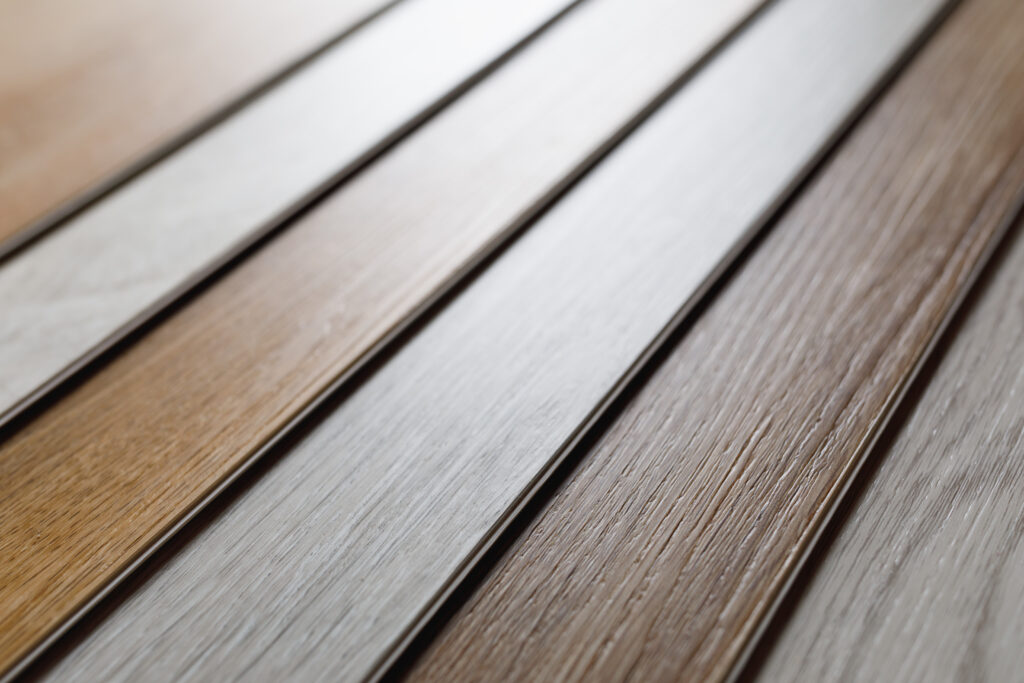
Laminate flooring is a multi-layer synthetic flooring product fused together with a lamination process.
Laminate flooring has grown significantly in popularity, perhaps because it may be easier to install and maintain than more traditional surfaces such as hardwood flooring. It may also have the advantages of costing less and requiring less skill to install than alternative flooring materials.
Laminate flooring is packaged as a number of tongue and groove planks, which can be clicked into one another. Installed laminate floors typically “float” over the sub-floor on top of a foam/rubber underlayment, which provides moisture- and sound-reducing properties. A small (5–10mm gap is required between the flooring and any immovable object such as walls. this allows the flooring to expand without being obstructed. Baseboards (skirting boards) can be removed and then reinstalled after the laying of the flooring is complete for a neater finish, or the baseboard can be left in place with the flooring butted into it, then small beading trims (Scotia) can be fitted to the bottoms of the baseboards. Saw cuts on the planks are usually required at the edges and around cupboard and door entrances, but professional installers typically use door jamb undercut saws to cut out a space to a height that allows the flooring to go under the door jamb & casing for a cleaner look.
Cleaning laminate floors is easy and comparable to cleaning other hard surfaces such as hardwood floors. It is generally not recommended to mop laminate floors as this has been shown to cause damage by soaking into the composite portion which allows warping over time. Most manufacturers suggest using dry methods such as brooms to clean with occasional wet cleaning with more specialised mop-type products that do not leave excessive water on the flooring.
